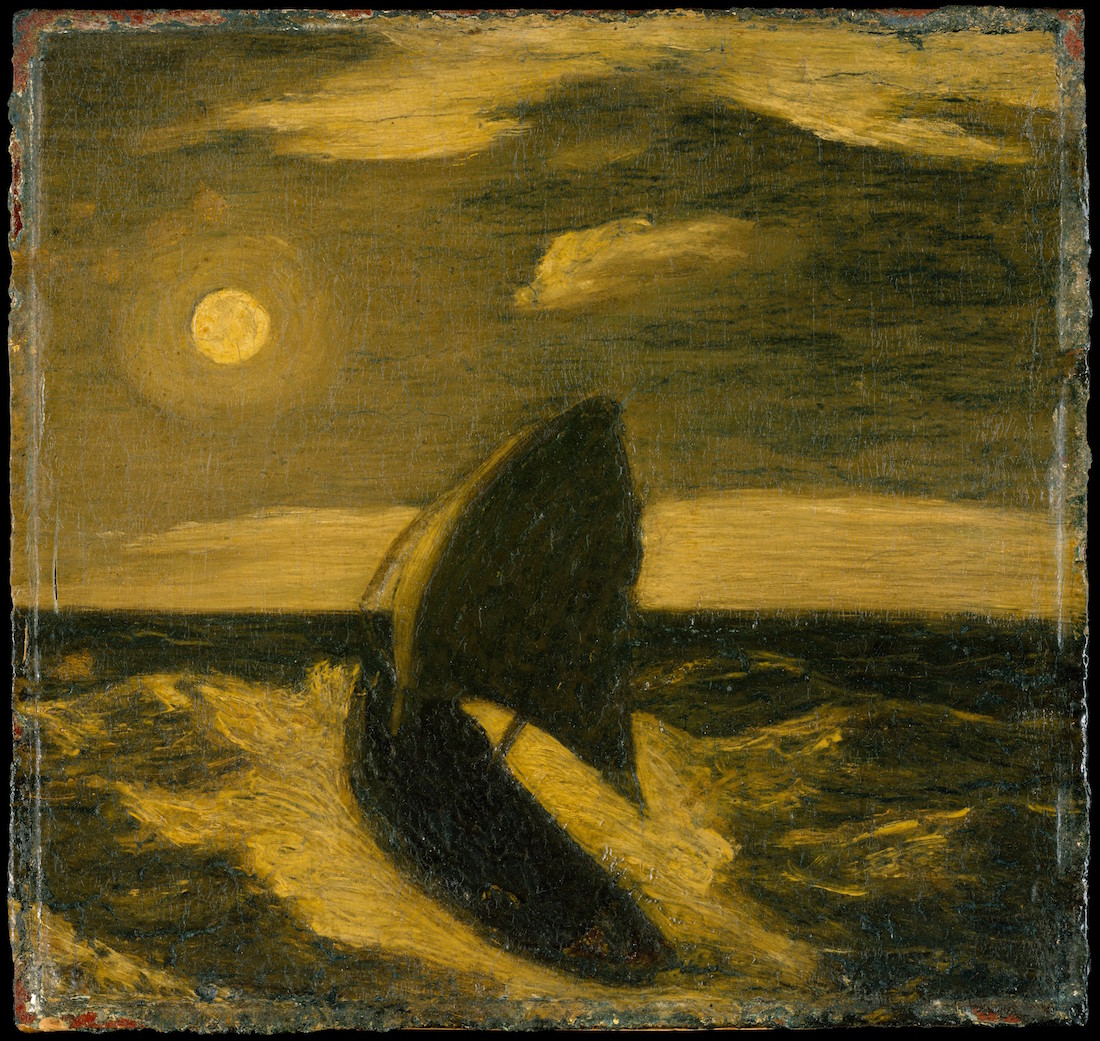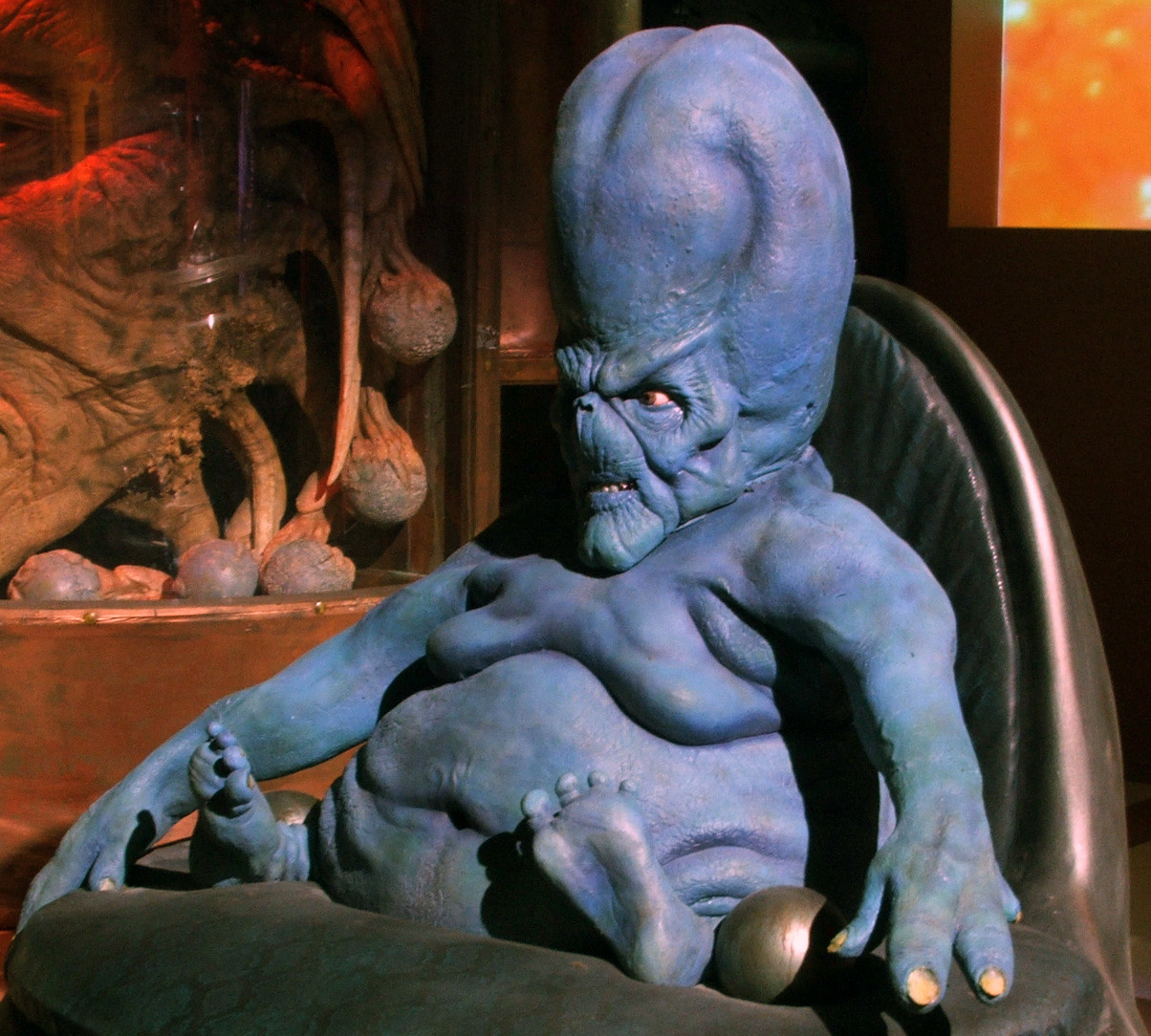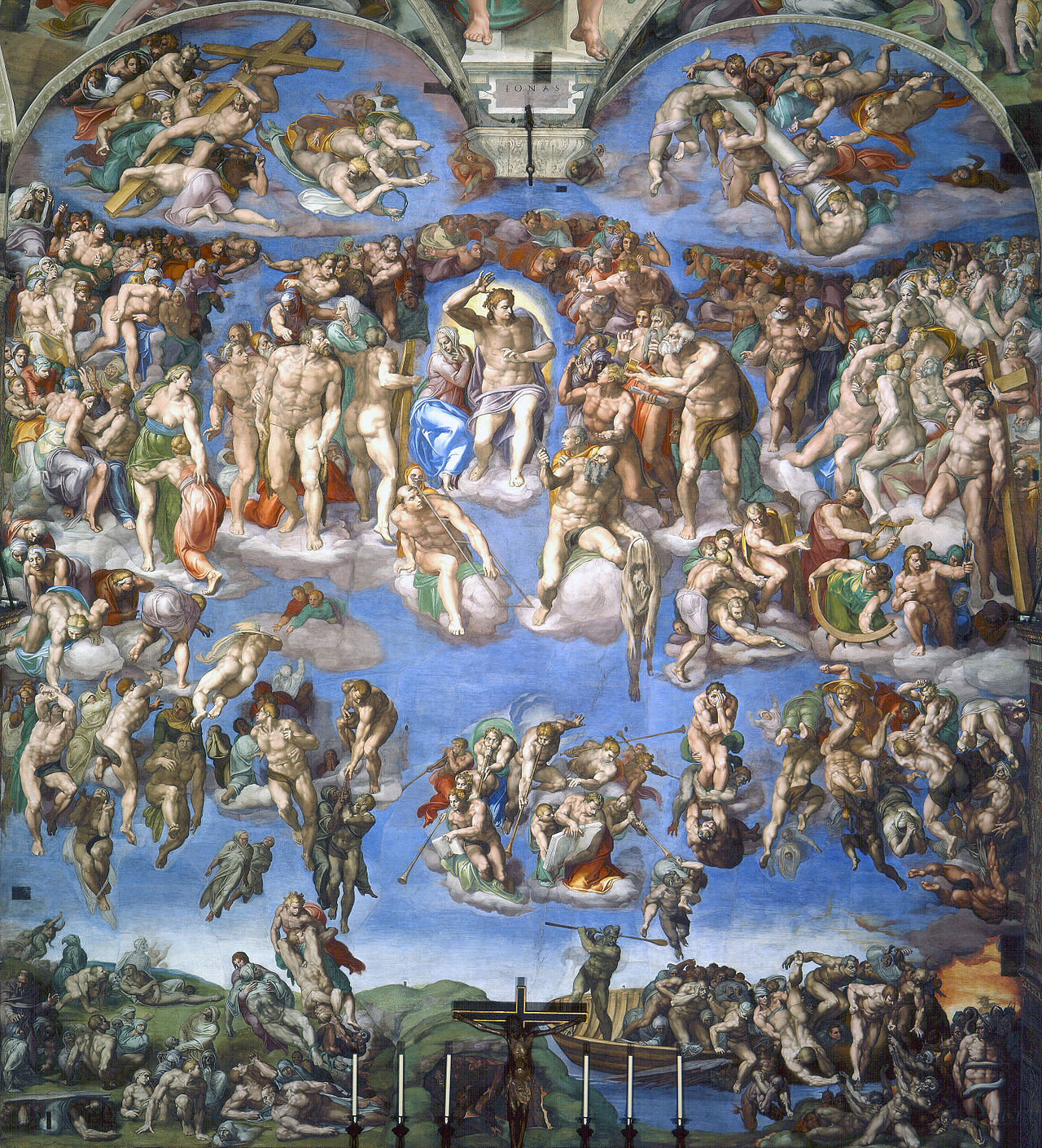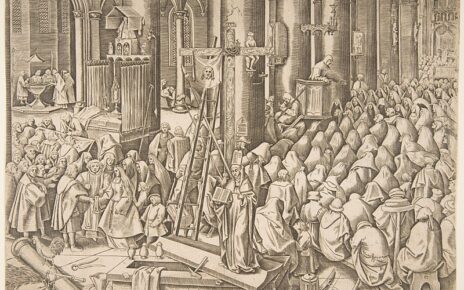The following is the second installment of a three-part series. The first one can be found here.
Used by Auden in concert with “limitation” to qualify boundaries proper to secular aesthetics in modernity, the term “absurd” in its Kierkegaardian sense implies another precinct against which art and the artist will necessarily chafe in nonreligious domains of the understanding. Ultimately, as a lay, non-liturgical, and thus secular work of art that surreptitiously advances a “Christian conception” of aesthetics, “The Sea and the Mirror” delineates the zone of the absurd as wrought by a religious “paradox of faith”; bordering on the secularist understanding’s “finite world” of aesthetic play, this domain of religious paradox and absurdity harbors “an interiority [or level of ineffable secrecy in the singular individual] that is incommensurable with [the] exteriority” that governs the worldly, secular, empirical understanding.[1]
Amid the friction of these incommensurable realms, Christ’s passage from the oratorio’s Egyptian desert, through the titular mirror, and thence to the tain of the aesthetic commentary reinforces Auden’s “absurd” effort to intertwine religion and secularity in For the Time Being as a book of two poems. Qua his turn to Kierkegaardian existentialism, which imbricates while also differentiating between aesthetic, ethical, and religious “spheres,”[2] Auden in “The Sea and the Mirror” does not conflate religious interiority and secular exteriority.
True to their Kierkegaardian form, these domains persist as incommensurable, even as Auden draws the Holy Family into the commentary through an implicitly Christian conception of art. The flight of the Incarnation’s key players, as each is redrawn in “For the Time Being,”[3] into Auden’s Shakespearean “work of art” on “the limitation of art”[4] thus interposes the two States in For the Time Being as a singular book: the imperfect “religious state” of the oratorio[5] and the imperfect “aesthetic state” of the commentary. As Auden implies in conversation with Alan Ansen, the stakes of traversing such states are intriguingly novel:[6]
The Catholics haven’t really evolved a Christian aesthetic. They didn’t take over Aristotle’s metaphysics, so why persist in a pagan aesthetic? After all, they didn’t condemn works of art as being unchristian. Even St. Thomas relies on Aristotle’s aesthetic. In fact, one wonders just how Christian he was…And the unsureness of the Catholic Church in dealing with the movies is another example. They have a good answer for almost everything – contraception, for example.
But their attitude towards manifestly heretical movies, which they let by, is thoroughly inconsistent. You know, I am beginning to feel that even Dante isn’t really a Christian writer. He’s really the greatest poet. It’s amazing how much harder it gets when one has come to take things seriously. Before I became a believer it was easy to accept Dante’s theology and suspend disbelief. But now I’m coming to doubt whether he really was a Christian. He doesn’t realize that God suffers.
Auden’s views here revolve around his Kierkegaardian distinction between an unelaborated “Christian aesthetic” and an established secular or “pagan aesthetic.” For him, Christianity has not developed a coherent philosophy of art by which to mark its own aesthetic stances from those enshrined in Antiquity’s pagan conventions and in the nascent secular worldview of Renaissance Europe.[7] Corollaries of this argument include not only Auden’s sense of the inconsistencies that mar Catholicism’s aesthetic judgment of films that are “manifestly heretical,” but also his provocative doubts as to the very Christianity of Aquinas and Dante; for, in the aesthetic sphere,
Aquinas’s Aristotelian baggage may inadvertently derail an ethical passage to the domain of religious faith and thus absurdity. Consonantly, following upon his own Patripassian conviction as to the Trinity’s quasi-creaturely suffering,[8] Auden conjectures that Dante’s theology is less Christian than we imagine; for, in the mediating ethical sphere, “Dante’s Hell consists of punishments imposed from without, not of sinners who deliberately stay there, which is the Christian belief.”[9] If Dante’s ethical sphere is compromised, then so is his religious sphere: “He doesn’t realize that God suffers.”[10]
By the mid-twentieth century Auden was not alone in his view that “[t]he Catholics haven’t really evolved a Christian aesthetic.”[11] Between 1961 and 1985, Swiss Catholic theologian Hans Urs von Balthasar completed a daunting sixteen-part study of Christianity, the first seven volumes of which he called The Glory of the Lord: A Theological Aesthetics. In Volume I: Seeing the Form, von Balthasar first traces “The Elimination of Aesthetics from Theology.” He then advances “From an Aesthetic Theology to a Theological Aesthetics” that will shape The Glory of the Lord’s remaining volumes.[12] Auden’s theological and aesthetic aims in For the Time Being, as I gauge its interfacing structure, dovetail with von Balthasar’s intentions in The Glory of the Lord.[13] Indeed, notwithstanding their differences in genre, both works ultimately grapple with secular modernity’s core “aesthetic contract”:[14]
The conventions or terms of the [aesthetic] contract are precisely those problems an artistic or intellectual community is willing to undertake for the duration of the contract. Examples of particular aesthetic contracts include “German tragic drama,” “the Elizabethan sonnet,” décadence, modernism, and postmodernism…The aesthetic contract is in effect so long as its always provisional and tentative solutions are to problems whose relevance is agreed upon by some consensus…A new order of government or a new system of production or technology may so alter living and thinking conditions as to invalidate a particular aesthetic contract…Artworks that become the basis for aesthetic contracts hover between an exciting hypothesis regarding possibility and a plausible analysis of existing conditions…“Creative freedom” is itself a clause deriving from one particular aesthetic contract, a late-Enlightenment-Romantic one, whose terms are elaborated, among others, by Kant, Schlegel, and Kierkegaard.
For von Balthasar and Auden, the epicenter of modernity’s aesthetic contract is “the secular nature of the theological void,” which “the artist was constructed to fill”; for both authors, moreover, the artist—a “human-born deity of creative and intellectual endeavor”—is “encrusted with metaphysical values so persistent that we are laboring at their productive illumination even today.”[15] However, relying “for its format on stipulations made by Rousseau in The Social Contract,”[16] the aesthetic contract in Henry Sussman’s account curiously elides a major “late-Enlightenment-Romantic” exemplar of “creative freedom” to whom The Glory of the Lord responds explicitly and to whom For the Time Being, I submit, implicitly responds.
In von Balthasar’s Seeing the Form, Friedrich Schiller is among the first historical proper names we encounter. “When
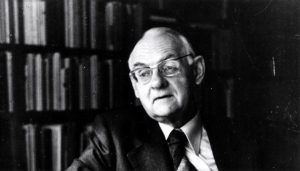
beauty becomes a form which is no longer understood as being identical with Being, spirit, and freedom,” he writes, “we have entered an age of aestheticism.”[17] “Borrowing from Kant,” von Balthasar continues, Schiller ventures boldly into this age of aestheticism by elaborating “spirit’s splendour in the beauty of form” and by arguing for “spirit’s sovereign freedom” in “an existence fully governed by the aesthetic principle.”[18]
As von Balthasar explains in Volume V: The Realm of Metaphysics in the Modern Age, Schiller’s thought-experiment culminates in a forceful secularization of “the Christian eschatology of the resurrection”: “Schiller’s aesthetic prosthesis replaces “the miracle of the grace of the personal God” with “the miracle of the divine charis of man (who had always been divine).”[19]
Von Balthasar thus echoes Auden’s perspective on the magnetic force of aesthetics in Greek Antiquity when he pinpoints Schiller’s
reduction of the infinite process of the becoming of the world towards God to the progress of mankind towards its highest (perhaps unattainable, only approachable) idea, and finally the provenance of the ideal from the Greeks.[20]…Thus the inquiry into Being and God is lost to sight, and the spotlight falls on man actively involved in the agôn and in tragedy: on a being who possesses ideals but not gods, on a being who possesses its majesty and its glory within itself. Man has no need of myth; he is his own myth.
Coupled with Paul de Man’s theoretical critique of Schiller’s On the Aesthetic Education of Man for its misreading of Kant,[21] von Balthasar’s theological intervention ups the ante for “The Sea and the Mirror,” whose clandestine aim—as a secular because non-liturgical work of art—is to delineate “a Christian aesthetic.”[22] More precisely, because Schiller develops “the earliest formal theory of an aesthetic state,”[23] Auden’s absurd endeavor “to show, in a work of art, the limitation of art”[24] inevitably collides with Schiller’s aesthetic state.
At closer range, this collision transpires through the poem Auden crafts for Gonzalo in “Chapter II: The Supporting Cast (Sotto Voce).” Described in The Tempest as “an honest old councillor”[25] and by Auden as a “good but stupid character”[26] “who fails to acknowledge the existence of evil,”[27] Gonzalo in “The Sea and the Mirror” admits to not having “trusted the Absurd.”[28] As the stanza’s sole capitalized abstraction, “the Absurd” is bound to evoke Auden’s debts to Kierkegaard, whose epistemology of faith lends “the Absurd” its own interiorized domain of religious passion. “Had [Gonzalo] trusted the Absurd,” we read, all of his fellow characters on the island “would have begun to dance / Jigs of self-deliverance.”[29] Locked, however, in the island’s verdant aesthetic field, where myriad surfaces obscure the all-important tain of human experience, Gonzalo encounters the world largely through the fancy of “speculation”; in turn, he merely freezes “Vision into an idea, / Irony into a joke.”[30]
Despite his newfound awareness of religious absurdity’s more solemn vistas, Auden’s Gonzalo basically resumes the mode of glassy speculation that originally lured him toward “Doubt and insufficient love”:[31]
Farewell, dear island of our wreck.
All have been restored to health,
All have seen the Commonwealth,
There is nothing to forgive.
By freezing Gonzalo’s aesthetic “Vision into an idea” of “the Commonwealth,” these lines at once introduce the specter of Schiller’s “aesthetic state,” allude deftly to Gonzalo’s famous lines in the play’s second act, and afford a dubious reading of The Tempest’s conclusion. Consider how in The Tempest Sebastian and Antonio mock Gonzalo’s vision of his aesthetic state:[32]
GONZALO
I’th’ commonwealth I would by contraries
Execute all things, for no kind of traffic
Would I admit; no name of magistrate;
Letters should not be known; riches, poverty,
And use of service, none; contract, succession,
Bourn, bound of land, tilth, vineyard, none;
No use of metal, corn, or wine, or oil;
No occupation, all men idle, all,
And women too, but innocent and pure;
No sovereignty—
SEBASTIAN Yet he would be king on’t.
ANTONIO The latter end of this commonwealth forgets the beginning.
As Stephen Orgel observes, Gonzalo’s aestheticized depiction of his very own colonial “plantation of this isle”[33] “is closely related to a section of Montaigne’s essay ‘Of the Cannibals’.”[34] Carrying this vision to “prelapsarian”[35] extremes with a twofold stipulation that “All things in common nature should produce / Without sweat or endeavour”[36] and that “nature should bring forth / Of its own kind all foison, all abundance / To feed my innocent people,”[37] Gonzalo does not heed his jeering interlocutors: Sebastian signals the contradiction in Gonzalo’s kingdom without sovereignty and Antonio dashes the vision’s wider illogicality.
 Consequently, even after suggesting he winnowed a moment of “Irony into a joke” played at his own expense, Auden’s Gonzalo nevertheless considers his “Commonwealth” as veritably “seen” rather than mocked as illusory.[38] Captivated by this aesthetic state, Auden’s Gonzalo persists in his skepticism of the religious absurd, in turn misjudging the degree to which The Tempest resolves its moral conflict: “All have been restored to health,” he says, for “There is nothing to forgive.”[39]
Consequently, even after suggesting he winnowed a moment of “Irony into a joke” played at his own expense, Auden’s Gonzalo nevertheless considers his “Commonwealth” as veritably “seen” rather than mocked as illusory.[38] Captivated by this aesthetic state, Auden’s Gonzalo persists in his skepticism of the religious absurd, in turn misjudging the degree to which The Tempest resolves its moral conflict: “All have been restored to health,” he says, for “There is nothing to forgive.”[39]
Reminiscent of de Man’s critique of Schiller in “Aesthetic Formalization: Kleist’s Über das Marionettentheater,” Auden shapes Gonzalo’s poem as a subtle parody of free-wheeling aestheticism.[40] In his meta-performance monologue, Gonzalo admits to the laughably un-ironic presentation of his ideal “Commonwealth” in The Tempest. Nevertheless, upon bidding farewell to the “dear island of our wreck,” he suddenly undercuts his own self-reflexive criticism and lapses without irony into the outlandish pastures of his singular “Commonwealth,” which in his estimation “All have seen.”[41] The allure of perfection in the aesthetic state, Auden seems to indicate in Gonzalo’s poem, is potent enough to undo even one’s own discernment of irony’s critical, self-reflexive merits.[42] In this context, an implicit target of “The Sea and the Mirror” is the political and ethical legacy of Schiller’s aestheticism in On the Aesthetic Education of Man:
In the midst of the awful realm of powers, and of the sacred realm of laws, the aesthetic creative impulse is building unawares a third joyous realm of play and of appearance, in which it releases mankind from all the shackles of circumstance and frees him from everything that may be called constraint, whether physical or moral. If in the dynamic state of rights man encounters man as force and restricts his activity, if in the ethical state of duties he opposes him with the majesty of law and fetters his will, in the sphere of cultivated society, in the aesthetic state, he need appear to him only as shape, confront him only as an object of free play. To grant freedom by means of freedom is the fundamental law of this kingdom[43]
This passage resonates strongly with the architecture of Gonzalo’s Commonwealth in The Tempest 2.1.145-56. Just as Sebastian simpers at the contradiction in Gonzalo’s kingdom without sovereignty, so might we question how the abstract “free play” in Schiller’s aesthetic state could possibly unshackle us “from everything that may be called constraint, whether physical or moral”; similarly, just as Antonio punctures the logic of Gonzalo’s idyllic plantation, whose “latter end…forgets the beginning” (2.1.156), so might we perforate the teleological reasoning that spirits us, sans irony, from “the dynamic state of rights” to “the ethical state of duties” to Schiller’s “aesthetic state,” with its lithe tautology of “freedom by means of freedom” and its slippery viewpoint on the human as a “shape.”[44]
Within this political legacy and its ambiguous geometry, Auden’s most explicit response to the secularizing “aesthetic contract” that descends from Schiller appears in the aptly-titled essay, “Squares and Oblongs”:[45]
A society which really was like a poem and embodied all the esthetic values of beauty, order, economy, subordination of detail to the whole effect, would be a nightmare of horror, based on selective breeding, extermination of the physically or mentally unfit, absolute obedience to its Dictator, and a large slave class kept out of sight in cellars.
Written in 1947, this passage countermands the aesthetic ideals of fascism while also glancing back to the Enlightenment’s radicalization of the aesthetic: “Everything in the aesthetic State, even the subservient tool, is a free citizen having equal rights with the noblest”;[46] “and the intellect,” Schiller maintains in his deviation from Kant, “which forcibly moulds the passive multitude to its designs, must here ask for assent.”[47] Notably, Auden neither disarticulates nor bypasses this democratic kernel in aesthetic theory, even though he sees aestheticism as too-readily collaborative with ideological propaganda. In fact, in “The Sea and the Mirror,” or rather in For the Time Being as a book of two interfacing poems, Auden consistently grapples with this democratic kernel. In my view, that is, he subtly regulates the emancipatory claims of secular aestheticism by way of a “Christian conception of art.”[48]
Smuggled across the Egyptian desert of “For the Time Being” and then through the mirror of Auden’s Shakespearean commentary, at whose labyrinthine center we find not the fabled Minotaur but a monstrous figure named Caliban, the creaturely body of Christ[49] facilitates this regulation:[50]
As a biological organism Man is a natural creature subject to the necessities of nature; as a being with consciousness and will, he is at the same time a historical person with the freedom of the spirit. The Tempest seems to me a manichean work, not because it shows the relation of Nature [Caliban] to Spirit [Ariel] as one of conflict and hostility, which in fallen man it is, but because it puts the blame for this upon Nature and makes the Spirit innocent…The natural, conforming to necessity, cannot imagine possibility. The closest it can come to a relation with the possible is as a vague dream; without Prospero, Ariel can only be known to Caliban as “sounds and sweet airs that give delight and hurt not.”
Auden’s Pauline allegory of The Tempest, which he reinforces by alluding to Andrew Marvell’s “A Dialogue between the Soul and Body,”[51] distinguishes “Caliban, the embodiment of the natural” from “Ariel, the invisible spirit of imagination.”[52] For Auden, this allegory is intrinsic enough to Shakespeare’s aesthetics for the polarity at hand to be standardized in performance:[53]
In a stage production, Caliban should be as monstrously conspicuous as possible, and, indeed, suggest, as far as decency permits, the phallic. Ariel, on the other hand, except when he assumes a specific disguise at Prospero’s order, e.g., when he appears as a harpy, should, ideally, be invisible, a disembodied voice, an ideal which, in these days of microphones and loud-speakers, should be realizable.[54]
By attributing Manichaeism and thus radical dualism to The Tempest’s worldview, Auden in his critical prose establishes a hermeneutic that he will unravel in his poetic commentary. Through the meta-theatrical designs of “The Sea and the Mirror,” Auden develops an Ars Poetica that questions the aesthetic and religious positions of what he takes to be Shakespeare’s “Ars Poetica.”[55] Consonant with his Patripassian and thus anti-Manichean stance on the dialectics of Christian heresy,[56] Auden radicalizes Caliban’s creaturely account of himself as monstrous, as “phallic,” and as Prospero’s “impervious disgrace” that “sprawls in the weeds and will not be repaired.”[57] If indeed The Tempest and “The Sea and the Mirror” are extended cases of the body-soul dialogue, then Auden levels their aesthetic fields by having the body “present its own case objectively.”[58]
Raji Singh Soni holds a PhD in English from Queen’s University and teaches courses on contemporary world literature, literature of the South Asian diaspora, and violence in society at universities in Toronto. He is also Theory Colloquium Editor of Sikh Formations: Religion, Culture, Theory. Based in Princeton University’s archive of Derrida’s personal library, Soni’s current research project is supported by grants from Friends of Princeton University Library and NeMLA. He has published articles on “A Political Economy of the Humanities: Turning Tables with Marx and Kant” in Australian Humanities Review 59 (2016); “The Sleep of Christ: Incarnation and the Queerness of Heresy in W.H. Auden’s ‘For the Time Being” in Religion and the Arts 18.4 (2014); “Rethinking the Universal Secular Intellectual with Kant, Derrida, and Spivak” in Culture and Religion 14.2 (2013); and “Framing the Transnational Violence of Air India Flight 182” in TOPIA 27 (2012).
_____________________________________________________________________________________________
[1] Soren Kierkegaard, Fear and Trembling / Repetition, ed. and trans. Howard V. Hong and Edna H. Hong (Princeton: Princeton University Press, 1983., 69.
[2] In a key pseudonymous work, Kierkegaard writes: “The ethical is proud and declares: When I have judged, then nothing more is needed. This means that the ethical wants to be separated from the esthetic and the externality that is the latter’s imperfection; it desires to enter into a more glorious alliance, and this is with the religious. The religious then plays the same role as the esthetic, but as the superior; it spaces out the limitless speed of the ethical, and development takes place there.” Stages on Life’s Way, ed. and trans. Howard V. Hong and Edna H. Hong (Princeton: Princeton University Press, 1988), 442. For Žižek, Kierkegaard’s spherical existentialism overhauls “the ‘modern age’ opposition between external lifeless ritual and pure inner sentimental conviction: not through a pseudo-Hegelian synthesis, so that we re-establish an authentic social life in which ‘external’ social rituals are again permeated with authentic inner conviction…but by endorsing the paradox of authentic faith in which radical externality coincides with pure internality.” The Ticklish Subject: The Absent Center of Political Ontology (London: Verso, 2000), 212. For a sense of Auden’s critical appreciation of Kierkegaard’s existentialism, see two essays collected in Forewords and Afterwords, ed. Mendelson (London: Faber and Faber, 1973): “Søren Kierkegaard” and “A Knight of Doleful Countenance.” Also of note is the role of existential spheres in Auden’s The Enchafèd Flood; or, the Romantic Iconography of the Sea (London: Faber and Faber, 1951), 83-87. For discussion of Auden’s Kierkegaardian turn, see Rachel Wetzsteon, Influential Ghosts: A Study of Auden’s Sources (New York: Routledge, 2007).
[3] Soni, “The Sleep of Christ,” 562-66.
[4] Mendelson, Later Auden, 205.
[5] Soni, “The Sleep of Christ,” 566-67.
[6] Ansen, The Table Talk of W.H. Auden, ed. Nicholas Jenkins (Princeton: Ontario Review Press, 1990), 33-34.
[7] Cf. Auden on the Newtonian “Great Chain of Being.” The Enchafèd Flood, 49.
[8] Soni, “The Sleep of Christ,” 556-62.
[9] Ansen, 34.
[10] Ibid.
[11] Ibid.
[12] Von Balthasar, The Glory of the Lord: A Theological Aesthetics, Vol. 1: Seeing the Form, trans. Erasmo Leiva-Merikakis, ed. Brian McNeill C.V.R. and John Riches (San Francisco: Ignatius Press, 1982).
[13] “We here attempt,” von Balthasar writes, “to develop a Christian theology in the light of the third transcendental, that is to say: to complement the vision of the true and the good with that of the beautiful. This introduction will show how impoverished Christian thinking has been by the growing loss of this perspective which once so strongly informed theology. It is not, therefore, our intent to yield to some whim and force theology into a little travelled side-road, but rather to restore theology to a main artery which it has abandoned. But this is in no sense to imply that the aesthetic perspective ought now to dominate theology in the place of the logical and the ethical. It is true, however, that the transcendentals are inseparable, and that neglecting one can only have a devastating effect on the others…we recommend that this attempt…not be dismissed a priori as ‘aestheticism’.” Seeing the Form, 9. Notably, whereas von Balthasar pursues the aesthetic as a field long-neglected by theology, Auden perhaps overstates the case by arguing that Catholic philosophy has “not really evolved a Christian aesthetic.” Ansen, 33. Von Balthasar might counter Auden by positing that the aesthetic field in question merits reconstruction, rather than construction.
[14] Henry Sussman, The Aesthetic Contract: Statutes of Art and Intellectual Work in Modernity (Stanford: Stanford University Press, 1997), 165-66.
[15] Ibid., 135.
[16] Ibid., 167.
[17] Von Balthasar, 22.
[18] Ibid., 22. Emphasis added.
[19] Von Balthasar, The Glory of the Lord: A Theological Aesthetics, Vol. 5: The Realm of Metaphysics in the Modern Age, trans. Oliver Davies, Andrew Louth, Brian McNeill C.R.V., John Saward, and Rowan Williams, ed. Brian McNeill C.V.R. and John Riches (San Francisco: Ignatius Press, 1991), 538.
[20] Ibid., 540.
[21] “Schiller goes on to valorize,” de Man writes: “And he will valorize the practical over the theoretical. The practical sublime, which is the only one he will keep talking about…is valorized completely at the expense of the theoretical sublime, where he got Kant right. So he adds something to Kant which is not in Kant, and then he valorizes what he has added as being more important than what really was in Kant” (140); Schiller, de Man continues, “goes much too far in the direction of establishing…the possibility of a pure intellect entirely separated from the material world, entirely separated from the sensory experience…[Schiller] posits pure intellect, which was unreachable in Kant…in Schiller, pure intellect comes in, as imagination comes in, to remedy our incapacity, whereas in Kant it is the failure of the imagination that leads to aesthetic contemplation.” “Kant and Schiller,” in Aesthetic Ideology, ed. Andrzej Warminski (Minneapolis: University of Minnesota Press, 1996), 146.
[22] Ansen, 33.
[23] Josef Chytry, The Aesthetic State: A Quest in Modern German Thought (Los Angeles: University of California Press, 1989), 70.
[24] Mendelson, Later Auden, 205.
[25] The Tempest, 96.
[26] Quoted in Kirsch, notes to The Sea and the Mirror: A Commentary on Shakespeare’s The Tempest, by Auden (Princeton: Princeton University Press, 2003), 86.
[27] Kirsch, notes, 86.
[28] Auden, For the Time Being, 21.
[29] Ibid., 21.
[30] Ibid., 21.
[31] Ibid., 21.
[32] The Tempest, 2.1.145-56.
[33] The Tempest, 2.1.141.
[34] Orgel, notes to Shakespeare’s The Tempest, 135. He quotes Montaigne: “It is a nation…that hath no kind of traffic, no knowledge of letters, no intelligence of numbers, no name of magistrate nor of political superiority, no use of service, of riches or of poverty, no contracts, no successions, no dividences, no occupation but idle, no respect of kindred but common, no apparel but natural, no manuring of lands, no use of wine, corn, or metal. The very words that import lying, falsehood, treason, dissimulation, covetousness, envy, detraction, and pardon were never heard of amongst them.”
[35] Orgel, notes, 135.
[36] The Tempest, 2.1.157-58.
[37] Ibid., 2.1.160-62.
[38] Auden, For the Time Being, 21. Cf. Gonzalo’s effort to deflect the mockery he elicits. To Alonso, for whom Gonzalo “dost talk nothing” (2.1.170), Gonzalo replies: “I do well believe your highness, and did it to minister occasion to these gentlemen, who are of such sensible and nimble lungs that they always use to laugh at nothing” (171-3). “‘Twas you we laughed at” (174), Antonio replies, prompting Gonzalo to underscore “nothing” rather than himself as mockery’s object: “Who in this kind of merry fooling am nothing to you; so you may continue, and laugh at nothing still” (175-6). Shakespeare, The Tempest.
[39] Auden, For the Time Being, 21. Auden notes that The Tempest “is not one of the plays in which, in a symbolic sense, harmony and concord finally triumph over dissonant disorder. The three romantic comedies which precede it, Pericles, Cymbeline, and The Winter’s Tale, and which deal with similar themes, injustice, plots, separation, all end in a blaze of joy—the wrongers [sic] repent, the wronged forgive, the earthly music is a true reflection of the heavenly. The Tempest ends much more sourly. The only wrongdoer who expresses genuine repentance is Alonso; and what a world of difference there is between Cymbeline’s ‘Pardon’s the word to all,’ and Prospero’s ‘For you, most wicked sir, whom to call brother / Would even infect my mouth, I do forgive / Thy rankest fault—all of them; and require / My dukedom of thee, which perforce I know / Thou must restore.’ Justice has triumphed over injustice, not because it is more harmonious, but because it commands superior force.” Auden, The Dyer’s Hand and Other Essays (New York: Vintage International, 1989), 526. Cf. Antonio’s poem, aptly composed in Dante’s terza rima, in “The Sea and the Mirror”: “Antonio, sweet brother, has to laugh. / How easy you have made it to refuse / Peace to your greatness! Break your wand in half, / The fragments will join; burn your books or lose / Them in the sea, they will soon reappear, / Not even damaged: as long as I choose / To wear my fashion, whatever you wear / Is a magic robe; while I stand outside / Your circle, the will to charm is still there. / As I exist so you shall be denied.” For the Time Being, 18.
[40] Soni, “In the Letter of Mere Reason,” 169n38.
[41] Auden, For the Time Being, 21. Emphasis added.
[42] Cf. Auden in conversation: “The thing that reconciles one to [St. Thomas] is the great vision he had in the closing days of his life when he said, about his work, ‘It’s all straw.’ You remember what Kierkegaard said about Hegel: ‘If he’d only said after he’d written his books, It’s all a joke, Hegel would have been a great man.” Ansen, 33.
[43] Friedrich Schiller, On the Aesthetic Education of Man in a Series of Letters, trans. Reginal Snell (New York: Frederick Ungar Publishing, 1965), 137.
[44] Schiller’s evocation of “shape” recalls Auden’s imagery of the (in)human as aesthetic object in Alonso’s poem: “Remember as bells and cannon boom / The cold deep that does not envy you, / The sunburnt superficial kingdom / Where a king is an object”; as well as “the desert / Where an emperor stands in his shirt / While his diary is read by sneering / Beggars, and far off he notices / A lean horror flapping and hopping / Toward him with inhuman swiftness.” For the Time Being, 23. Alongside these lines, Schiller’s reduction of the human to mere form or shape bears emphasis because his aesthetic “is primarily a social and political model, ethically grounded in an assumedly Kantian notion of freedom” whose “‘state’ …is not just a state of mind or of soul, but a principle of political value and authority that has its own claims on the shape and limits of our freedom.” De Man, “Aesthetic Formalization: Kleist’s Über das Marionettentheater,” in The Rhetoric of Romanticism (New York: Columbia University Press, 1984), 264. For Schiller, the shape or formation of citizen-subjects is crucial because his “Aesthetic Letters is a political document. Schiller makes this clear from the very outset when he asserts his concern for a concrete political problem to be solved through the aesthetic, since ‘it is beauty through which the way is made to freedom.’ The ‘problem’ to which Schiller refers is, of course, the condition of the French Revolution just after the execution of Louis XVI.” Chytry, 77.
[45] Complete Works of W.H. Auden: Prose, Volume II, 1939-1948, ed. Mendelson (Princeton: Princeton University Press, 2002), 349.
[46] Schiller, 140.
[47] Ibid.
[48] Mendelson, Later Auden, 205.
[49] Soni, “The Sleep of Christ,” 552-60.
[50] Auden, The Dyer’s Hand, 130-31. Emphasis added.
[51] In “Balaam and His Ass,” Auden quotes eight lines of Marvell’s 44-line poem: “Body: O who shall me deliver whole, / From bonds of this tyrannic soul? / Which, stretcht upright, impales me so, / That mine own Precipice I go… Soul: What Magick could me thus confine / Within another’s grief to pine? / Where whatsoever it complain, / I feel, that cannot feel, the pain.” The Dyer’s Hand, 128. In “Hic Et Ille,” to make a consonant point on body and soul with Marvell in the offing, Auden alludes to The Tempest 1.2.362-64: “You taught me language and my profit on’t Is, I know to curse. In the debate between the Body and the Soul, if the former could present its own case objectively, it would always win. As it is, it can only protest the Soul’s misstatement of its case by subjective acts of rebellion, coughs, belches, constipation, etc., which always put it in the wrong.” The Dyer’s Hand, 100. For further grounds on which to allegorize The Tempest as Auden does, see Nora Johnson, “Body and Spirit, Stage and Sexuality in The Tempest,” ELH 64, no. 3 (1997): 683-701.
[52] Auden, The Dyer’s Hand, 132.
[53] Ibid., 132-33.
[54] Cf. Alden T. Vaughan and Virginia Mason Vaughan, “Stage History” and “Screen History” in Shakespeare’s Caliban: A Cultural History (Cambridge: Cambridge University Press, 1991).
[55] Mendelson, Later Auden, 205.
[56] Soni, “The Sleep of Christ,” 555; 560-62.
[57] Auden, For the Time Being, 12-13.
[58] Auden, The Dyer’s Hand, 100.
